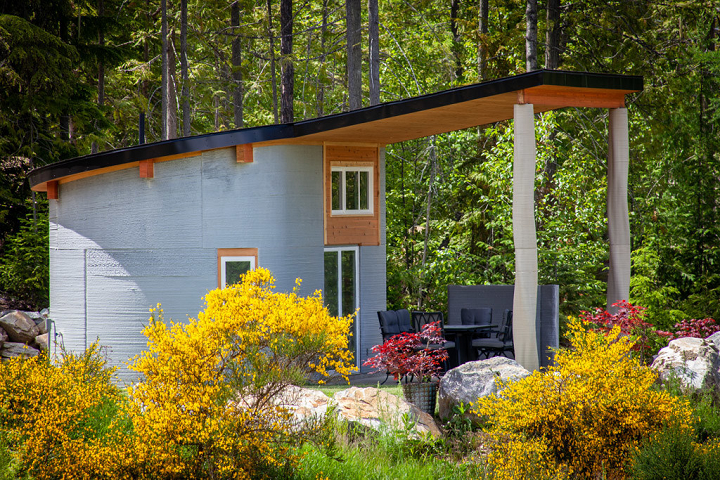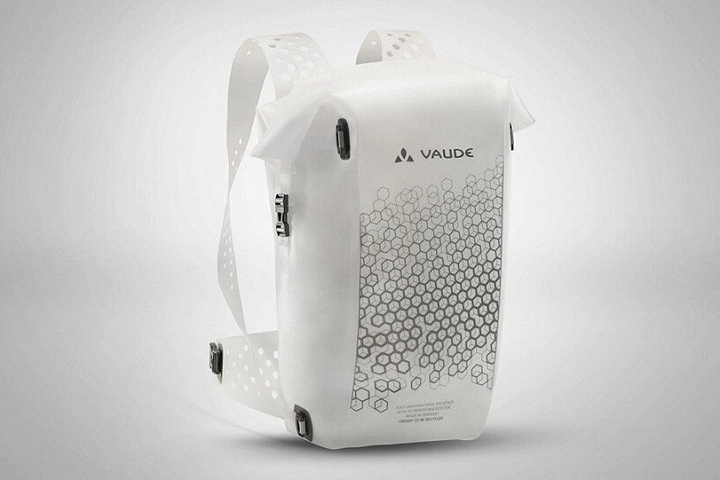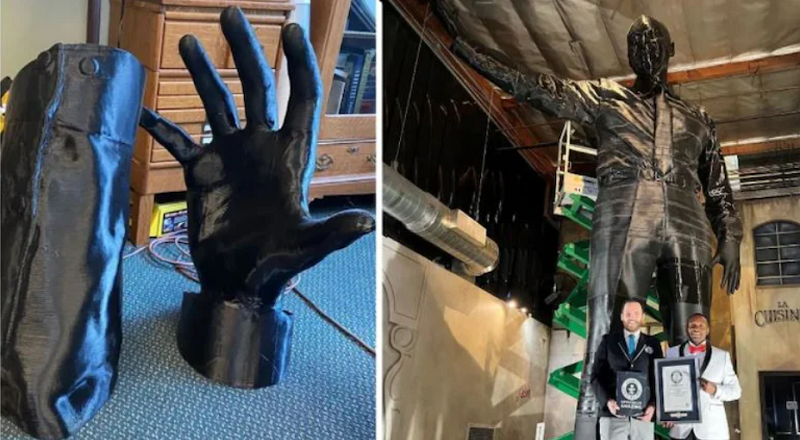We’re first talking about how to reduce defects in metal 3D printing in today’s 3D Printing News Briefs, and then moving on to 3D printed houses as a possible solution to help people displaced by floodwaters. Outdoor brand Vaude is using 3D printing to make a recyclable mono-material backpack. Finally, a US physician has broken a Guinness World Record for the tallest 3D printed sculpture of a human.
New Technique Reduces Metal AM Defects

L-R: UW–Madison mechanical engineering professor Lianyi Chen, and doctoral students Luis Escano and Minglei Qu, work in Chen’s lab, where they developed a technique to limit defects in 3D printing with metals. Photo by Renee Meiller, UW–Madison
First, a team of researchers with the University of Wisconsin–Madison published a paper about their work developing a unique method for 3D printing metal parts—using laser powder bed fusion (LPBF) technology—with far fewer defects. Their technique uses ceramic nanoparticles to control instabilities within the LPBF process that cause the defects, like cracks and pores, in the first place. LPBF melts thin layers of metallic powder in specific locations using a high-energy laser beam, but the surface of the powder heats to boiling when it interacts with the laser. This creates a hot vapor, which creates pressure that presses down on the melting material and causes droplets to jump out and cause these defects, which can compromise the durability and strength of the final part. But the researchers discovered that when they introduced ceramic nanoparticles, they created a coating that stabilized the melt pool and reduced spatter.
“Using metal 3D printing, we haven’t been able to consistently produce parts with the same high quality and reliability as those made by conventional methods, which means we have big concerns about using 3D-printed parts for critical or load-bearing applications where failure isn’t an option. This quality problem is the biggest barrier for using metal 3D printing in various applications,” explained Lianyi Chen, UW–Madison assistant professor of mechanical engineering.
“We demonstrate a potential way to solve the quality problem by making metal 3D printing technology much more reliable, enabling it to produce consistent, defect-lean parts. Using our unique method, we were able to 3D print a metal part that has very few defects and a comparable quality to that of a commercially manufactured part that you could buy off the shelf.”
Helping Displaced People with 3D Printed Houses?

Fibonacci House, Canada’s First 3D Printed Home, located near Nelson. (Photo via Twente Additive Manufacturing)
Merritt, a city in Canada, has begun a pilot project with the University of British Columbia (UBC) that’s investigating if 3D printed homes could be a true solution to help people who were displaced by floods late in 2021. The printer the city wants to buy costs over a million dollars, and it costs about $30,000 to print each home, which is why Merritt has partnered with UBC, charity organizations, and possibly even other levels of government to make the dream a reality. The whole of the project depends on how much funding was raised during the Hell or High Water fire and flood relief benefit concert at the city’s recent Rockin’ River Fest. If successful, the city could even begin 3D printing 600 square foot homes later this month.
“With some funding we could partner with different pubic and private consortiums to come up with the funds to get the printer up here and start printing these homes. We could do one printed home every five days or so, and what that gives you is the walls. We still have to do some more to it, but it definitely is a viable option,” explained Recovery Manager Greg Solecki.
“The roof comes after but we still have groups that can provide things like that after the walls are done.
“If we can generate some funds then UBC can match it and the federal government can hopefully match that and we end up having the printer in place so that we can start printing houses for people who need it.”
Vaude Introduces 3D Printed Recyclable Backpack
Sustainable outdoor brand VAUDE has introduced the Novum 3D, a 3D printed, totally recyclable backpack made from mono-materials. The prototype features a strong honeycomb construction and lightweight suspension system for maximum stability, and all parts of the bag, including the back pads, straps, and packsack, are removable and 3D printed from a thermoplastic TPU material. The open structure of the pack enables ideal ventilation as well, and varying degrees of hardness in the Novum 3D allow for excellent pressure distribution. VAUDE is committed to a responsible, sustainable design process for making comfortable products, like the Novum 3D backpack, while also reducing CO2 emissions. The goal of the Novum 3D is for it be recycled and made within a circular design loop.
“Ideally, a product should be returned completely back to the production process at the end of its life cycle. This is true recycling, but it is still a big challenge for the textile industry at the moment. Many products consist of at least 5 to 10 different materials or mixed fabrics and therefore cannot be separated by type. For this to succeed, the entire product life cycle must be considered and redeveloped,” VAUDE designers note on the brand’s website.
Tallest 3D Printed Human Sculpture Wins Guinness World Record
Finally, California-based emergency medicine physician Dr. Vinson Eugene Allen has won a Guinness World Records title for the tallest 3D printed sculpture of a human. Weighing roughly 680 kg and standing just over 6 meters, the sculpture is nearly twice as tall as the one 3D printed by the previous record holder. Dr. Allen, who founded Dusk to Dawn Urgent Care facilities, says his “Statue of Inspiration” was initially created to sit on a freeway billboard in Los Angeles as part of an advertising strategy. After patients started commenting on his first try, which didn’t quite meet the requirements for the record, Dr. Allen started to really think about breaking it in an effort to inspire, celebrate, and empower his community. It took a team of nine people 12 weeks to print and assemble his second effort, after the giant sculpture was shipped in 45 parts from Minnesota to California, and Dr. Allen says the win is even more special to him because it was verified during Black History Month.
Dr. Allen told the Guinness World Records that “My advice to anyone and everyone is: Dream Big. Stay Focused. Let no one tell you what you can’t do!”
Subscribe to Our Email Newsletter
Stay up-to-date on all the latest news from the 3D printing industry and receive information and offers from third party vendors.
You May Also Like
Profiling a Construction 3D Printing Pioneer: US Army Corps of Engineers’ Megan Kreiger
The world of construction 3D printing is still so new that the true experts can probably be counted on two hands. Among them is Megan Kreiger, Portfolio Manager of Additive...
US Army Corps of Engineers Taps Lincoln Electric & Eaton for Largest 3D Printed US Civil Works Part
The Soo Locks sit on the US-Canadian border, enabling maritime travel between Lake Superior and Lake Huron, from which ships can reach the rest of the Great Lakes. Crafts carrying...
Construction 3D Printing CEO Reflects on Being Female in Construction
Natalie Wadley, CEO of ChangeMaker3D, could hear the words of her daughter sitting next to her resounding in her head. “Mum, MUM, you’ve won!” Wadley had just won the prestigious...
1Print to Commercialize 3D Printed Coastal Resilience Solutions
1Print, a company that specializes in deploying additive construction (AC) for infrastructure projects, has entered an agreement with the University of Miami (UM) to accelerate commercialization of the SEAHIVE shoreline...































